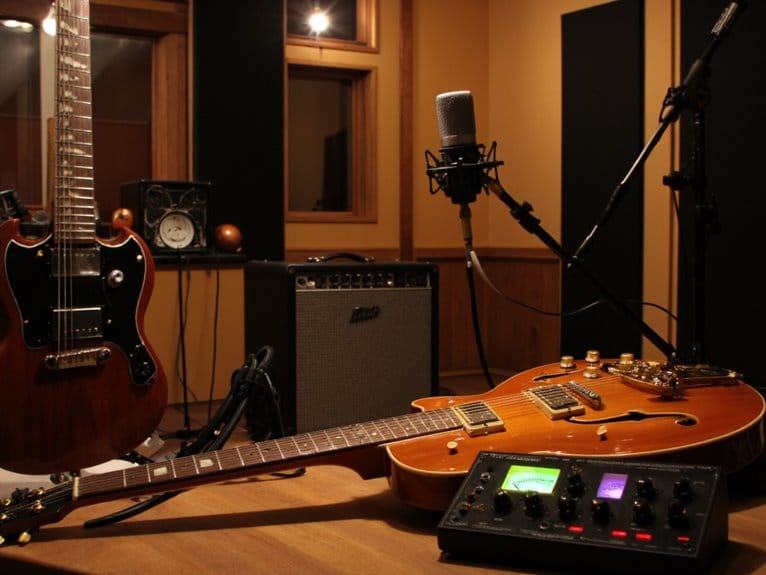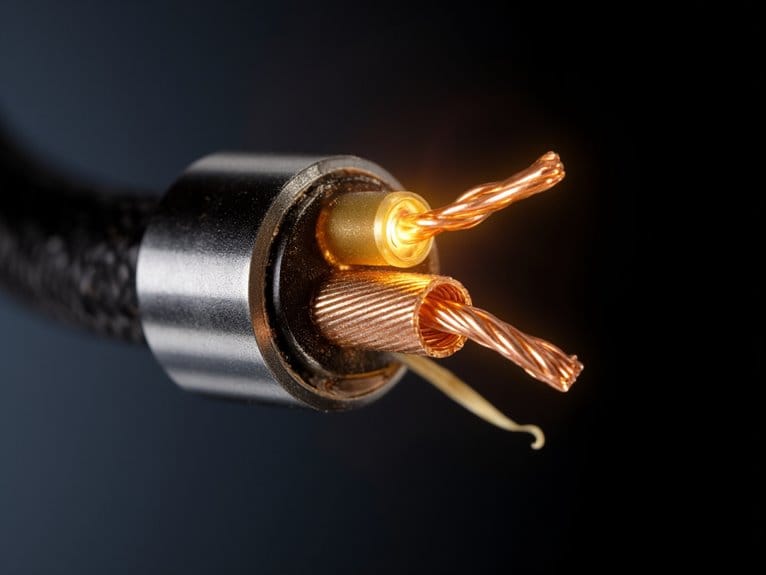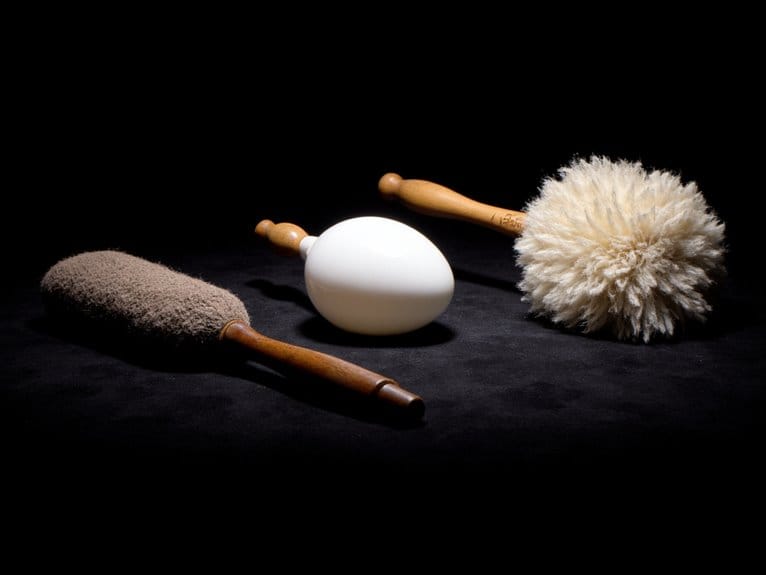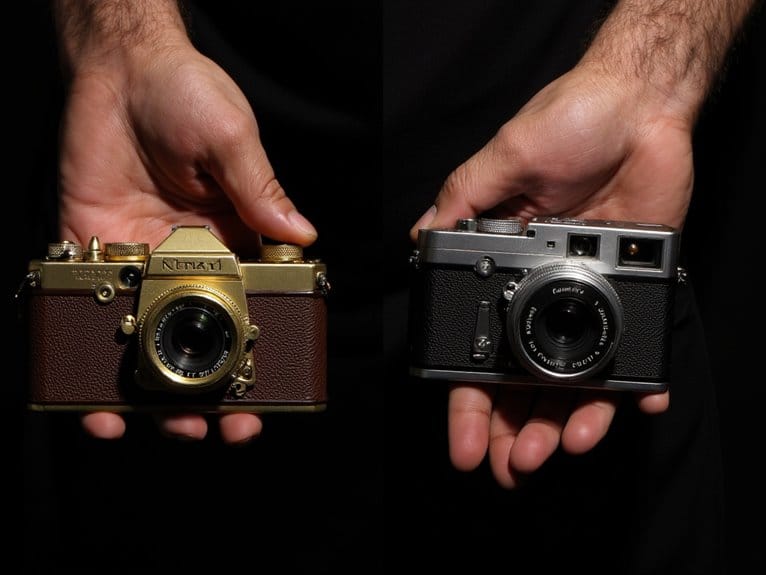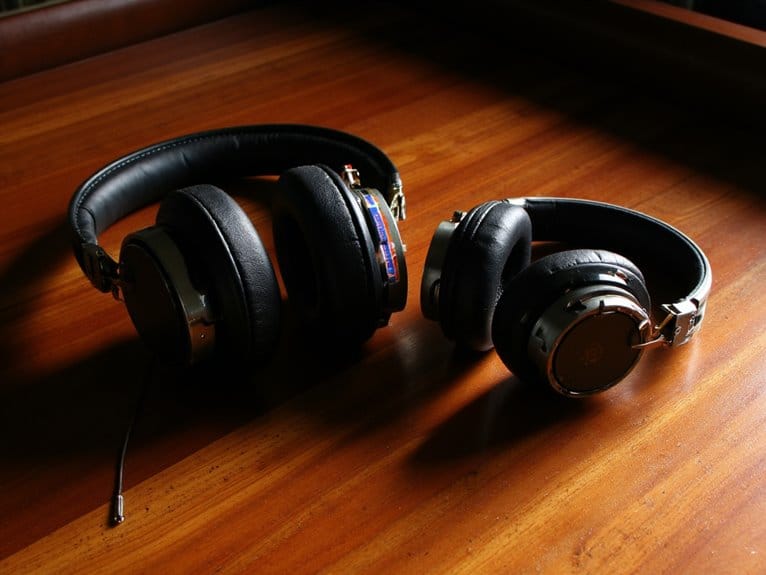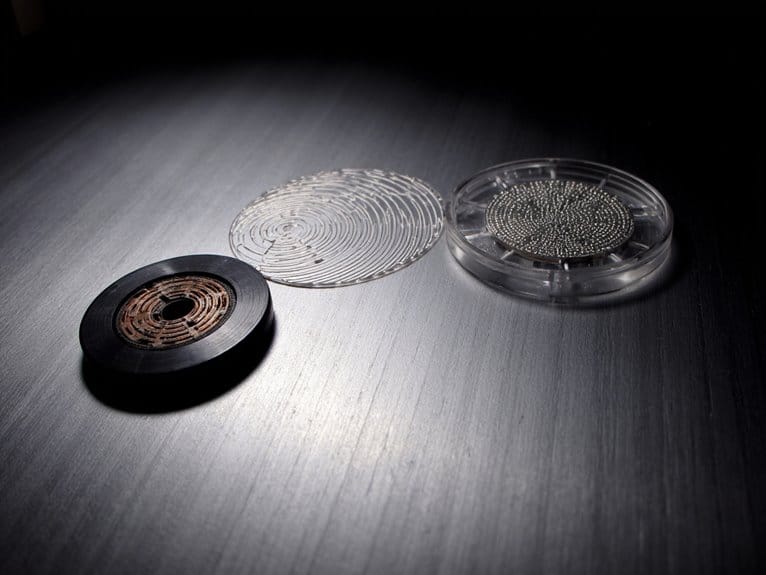Recording Direct vs. Miked Amplifiers
When you’re recording, direct input delivers clean, noise-free signals by converting your instrument’s high-impedance output to balanced, low-impedance format that interfaces love, while miked amplifiers capture authentic tube saturation, speaker coloration, and room acoustics that digital simulations often miss. I’ve found DI excels at tone preservation and post-production flexibility, though it lacks the natural warmth and harmonic complexity of miked amps, which require careful mic placement and acoustic treatment but reward you with organic dynamics. Exploring hybrid approaches reveals even more creative possibilities. Incorporating a studio quality microphone into your recording setup can further enhance the overall sound, capturing nuances that both direct input and miked amplifiers may overlook. By blending the clarity of DI with the richness of miked amps through strategic mic placement, you can achieve a depth of sound that is truly captivating. Experimenting with different mic techniques can unlock new dimensions in your recordings, allowing for a unique sonic signature that stands out.
We are supported by our audience. When you purchase through links on our site, we may earn an affiliate commission, at no extra cost for you. Learn more.
Notable Insights
- Direct input provides clean, noise-free recordings but lacks the natural warmth and harmonic complexity of miked amplifiers.
- Miked amplifiers capture authentic tube saturation and speaker coloration that digital simulations often cannot replicate effectively.
- Direct recording offers superior flexibility for post-production processing and reamping without acoustic room constraints or interference.
- Miked amplifier setups require careful mic placement and acoustic treatment but deliver organic dynamics and spatial depth.
- Hybrid approaches combine both methods simultaneously, blending analog warmth with digital precision for maximum versatility during mixing.
Understanding DI and Miked Amplifier Recording Methods
Recording engineers face a fundamental choice when capturing electric instruments: send the signal directly into the recording interface through a DI box, or position microphones in front of amplifiers to capture the acoustic output.
When you’re using DI Techniques, you’re bypassing amplifiers entirely, converting your instrument’s high-impedance signal into a low-impedance format that interfaces accept. This approach excels at Tone Preservation since it captures your instrument’s pure signal without room acoustics or amp coloration, while the isolation circuitry effectively eliminates Electrical Interference and ground loops that plague studio environments.
Understanding proper Signal Flow becomes essential here, as DI boxes transform unbalanced instrument signals into balanced mic-level outputs, enabling clean recordings that you can later reamp or process during mixing. Many budget audio interfaces now feature plug-and-play compatibility with popular recording software, making direct recording more accessible than ever. Modern audio interfaces with high-performing preamps provide the necessary gain and clarity to capture these direct signals with professional quality.
Benefits and Drawbacks of Miked Amplifier Recording
While DI recording offers clean signals and consistent results, miked amplifier recording presents a completely different set of advantages and challenges that I’ve wrestled with throughout my career. The sound quality you’ll achieve captures authentic tube saturation and speaker coloration that digital simulations struggle to replicate, though mic placement becomes critical for avoiding phase issues. Recording techniques involving multiple microphones can enhance spatial depth, but require acoustic treatment to control room reflections and ambient noise. Industry professionals often utilize splitter boxes to send guitar signals to multiple amplifiers simultaneously, creating richer and more complex tonal textures.
| Aspect | Benefits | Drawbacks |
|---|---|---|
| Tone | Natural warmth, organic dynamics | Limited post-production flexibility |
| Setup | Customizable sonic texture | Complex mic placement, longer setup |
| Cost | Authentic amp representation | Higher equipment investment required |
The trade-off between authenticity and convenience defines this approach’s practicality.
Advantages and Limitations of Direct Input Recording
Though miked amplifier recording delivers authentic tonal character, I’ve found that direct input recording offers a fundamentally different approach with its own compelling advantages and notable limitations.
The primary benefits you’ll experience include exceptional noise reduction through balanced signal conversion, which maintains signal integrity over long cable runs while eliminating electromagnetic interference.
This setup simplicity allows immediate connection to audio interfaces without complex mic positioning, delivering reliability consistency across different recording environments. This ease of use is particularly beneficial for podcasters and musicians on the go, allowing for rapid setup and teardown without sacrificing audio quality. By optimizing sound with ribbon microphones, users can capture rich, warm tones that elevate the recording experience. This versatility makes it an ideal choice for a variety of applications, from studio sessions to live performances.
Direct input recording excels in four key areas:
- Recording flexibility – Capture clean signals for extensive post production manipulation
- Tonal options – Enable re amping techniques with various amplifier simulations
- Sound shaping – Apply unlimited digital processing without acoustic constraints
- Isolation control – Eliminate room acoustics and instrument bleed completely
However, DI signals inherently lack the natural warmth and harmonic complexity that miked amplifiers provide.
Hybrid Approaches and Choosing the Right Method
Between these two distinct recording philosophies lies a third path that I’ve come to appreciate for its practical versatility and sonic potential.
You can capture your amplifier with both a microphone and direct input simultaneously, creating a hybrid workflow that combines the organic sonic characteristics of miked amps with the controlled precision of DI recording.
This approach lets you blend analog warmth from your speaker cabinet with the digital precision of direct signals during mixing, giving you multiple sonic options without committing to one approach.
I’ve found this particularly valuable when working with artists who want flexibility, since you can emphasize the room sound, focus on the direct signal, or create entirely new textures by combining both sources in creative ways.
On a final note
You’ve got solid options whether you’re tracking direct, miking amplifiers, or blending both approaches, and honestly, there’s no universally correct choice here. Your decision should align with your project’s sonic goals, available gear, and recording environment limitations. I’ve found that experimenting with different combinations often yields unexpected results, so don’t hesitate to try unconventional setups. Trust your ears, consider your mix context, and remember that great songs transcend recording methods.

